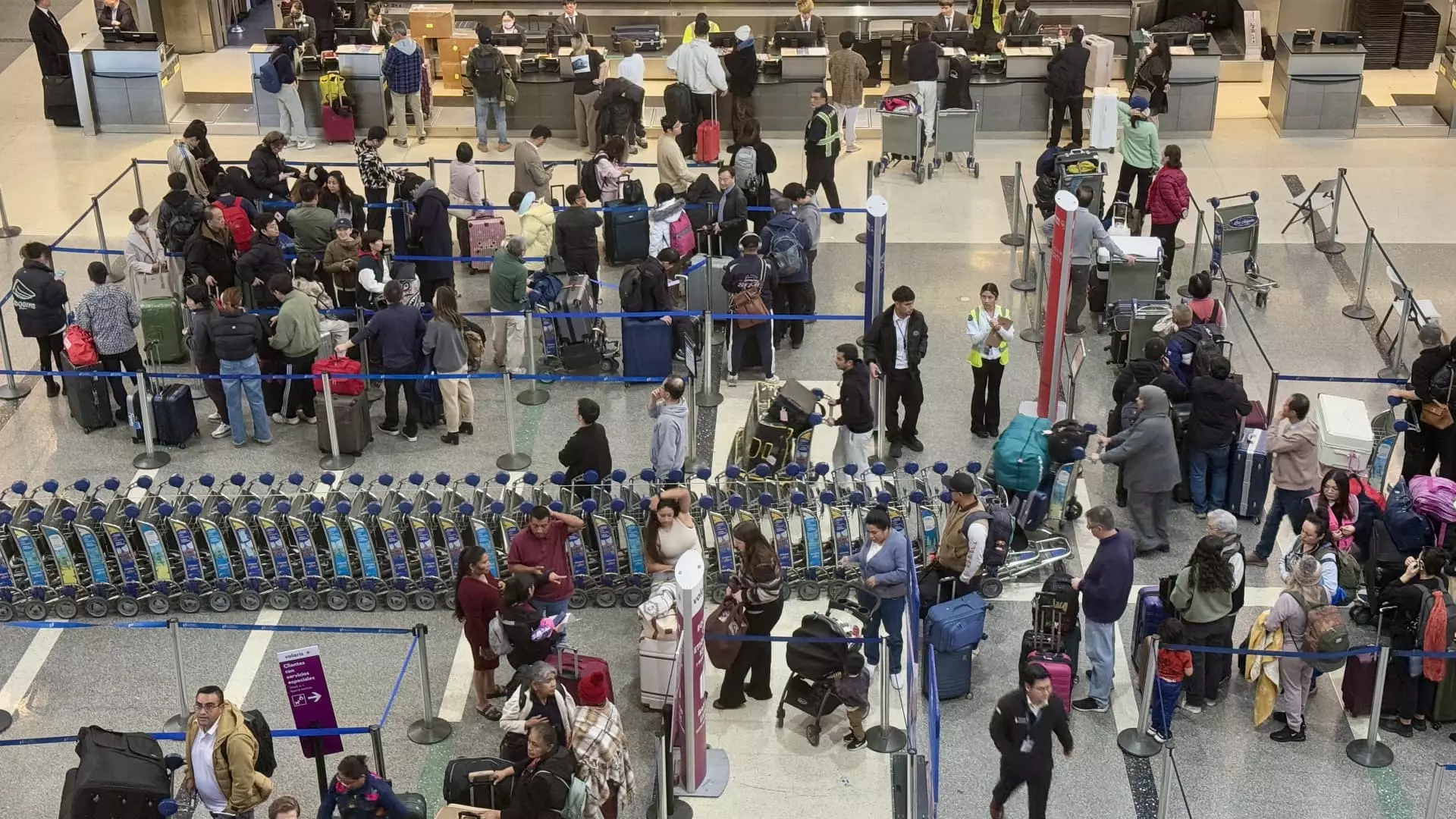In today’s economic climate, while the specter of inflation looms larger than ever, pockets of deflation are emerging, creating a complex landscape for consumers. Contrary to the prevailing narrative that inflation is an inescapable burden, recent trends reveal a different story. Prices for essential goods like airline tickets, groceries, and gasoline are showing signs of decline, sparking both relief and caution among consumers. However, this deflation could be as fleeting as a summer storm, prompting deeper questions about the sustainability and implications of such price falls.
Ryan Sweet, chief U.S. economist at Oxford Economics, aptly points out that supply and demand are the pulse beat of economic prices. Yet, the current situation is far from simple. While certain items have seen relieving price drops, these changes can be particularly volatile. Goods and services that are often susceptible to price swings, such as electronics or travel costs, can reverse trends based on mere whispers of demand changes or geopolitical shifts. As Sweet suggests, while pride in lower prices is tempting, the reality is that consumers could soon face sticker shock again.
The Unreliable Nature of Good News
Amidst this deflationary scenario, it’s crucial to consider comments from noteworthy economists. Mark Zandi, chief economist at Moody’s, paints a bleak outlook about the longevity of these price reductions. His assertion that consumers should not get too comfortable with the current lower prices rings true when considering the factors fueling these declines. Tariffs, international trade tensions, and uncertainties in the larger economic ecosystem can easily shift momentum back to higher consumer prices. It leads one to wonder: can we genuinely trust these fleeting price drops, or are they simply an illusion masking deeper economic woes?
For instance, gasoline prices may have dipped significantly in recent months, yet they remain a sensitive barometer of the broader economic health. The average retail price is hovering above $3 a gallon, but with oil futures dropping 22%, it raises the question of whether the downward trend can be maintained. With OPEC+ agreeing to raise production, it’s becoming increasingly plausible that we may see a prick in this inflationary bubble sooner rather than later.
Consumer Electronics: Innovation’s Double-Edged Sword
Among the most intriguing narratives are those surrounding consumer electronics. The price drops in television sets and smartphones, with reductions of 9% and 14% respectively, are linked to technological advancements that make production cheaper and more efficient. On the surface, these price declines should be celebrated by consumers, offering them more technological capabilities for less financial outlay. However, this comfort comes with a caveat. Over-reliance on constant innovations can create a vicious cycle of consumption where the value of goods becomes obscured by rapid replacements and upgrades.
In other words, yes, the tech-savvy individual can now gravitate towards a range of affordable, high-quality devices, but this trend also underscores an increasingly throwaway culture. The economy might benefit in terms of short-term spending, but what does it mean for long-term consumer sentiment and sustainability? Are we sacrificing our purchasing power and ultimately our value systems for more of, arguably, less?
Turning Back the Clock on Produce Prices
When examining declines in produce prices, factors like increased seasonal supply play a significant role. Tomatoes, for example, have seen price reductions, but the looming specter of tariffs could soon shatter this brief moment of relief. The complexities surrounding agricultural pricing show that while we can relish lower prices today, these could pave the way for harsher economic realities tomorrow.
The unpredictability of tariffs and trade agreements further complicates the picture, evoking memories of past agricultural crises. Sanctions and delayed imports can thrust once-healthy markets into turmoil. Beyond the supermarkets, economic insecurities are spiraling down to the individual farmer, thus compelling society to ask if these short-lived price drops compromise the larger agricultural economy.
Challenges Facing the Retail Sector
Finally, we must address the phenomena taking over retail goods. Price declines in categories like sporting goods and household items may paint a rosy picture, yet they can conceal more sinister implications. If retailers have overstocked and are discounting inventory just to clear it out, we may be witnessing a dangerous cycle of consumerism that encourages reckless purchases driven by fear of impending tariffs.
The intricacies of retail pricing illuminate the thin line between savvy consumer habits and potential traps set by industries. As consumers, we are left to navigate the ebb and flow of prices both tactically and strategically, questioning whether our enthusiasm for current deals is worth the underlying risks.
Thus, while some areas offer economic solace, we must tread carefully through a landscape that could quickly revert to one of financial strain, ensuring that our moment of reprieve does not lead us into turbulent waters.

